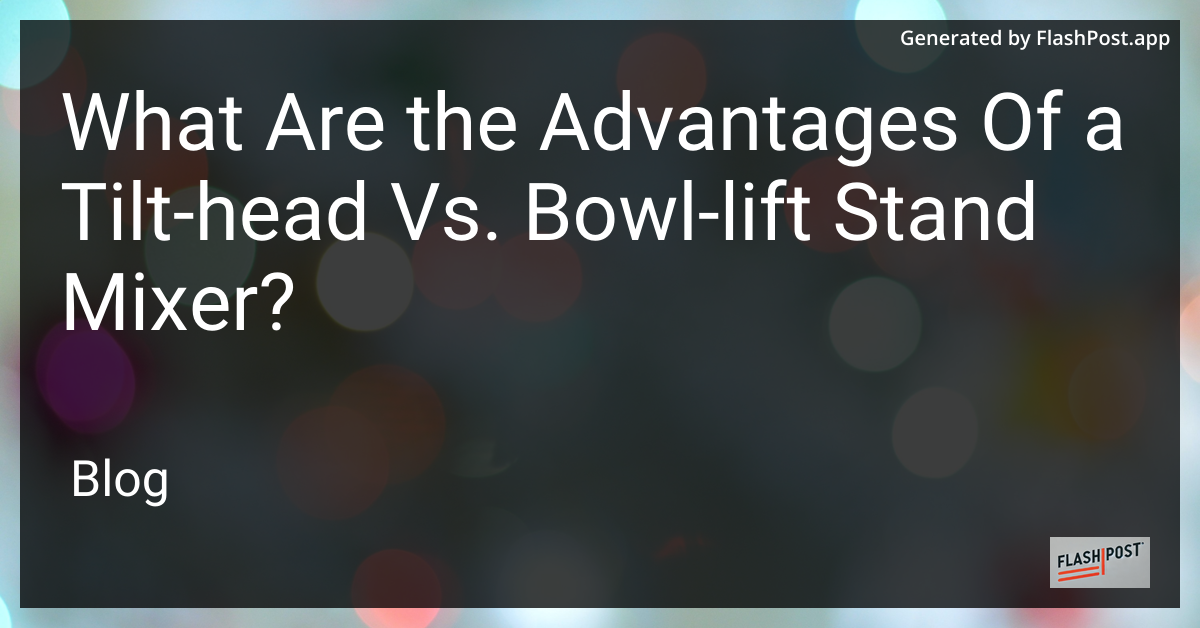
Tilt-Head vs. Bowl-Lift Stand Mixers: Advantages Explained
When it comes to stand mixers, two popular types often come into consideration: tilt-head and bowl-lift mixers. Each has its distinct advantages, making them better suited for different kitchen needs. Understanding these advantages can help in selecting the mixer that best complements your cooking habits and kitchen space.
Advantages of Tilt-Head Stand Mixers
- Ease of Use: Tilt-head mixers allow easy access to the bowl and the beaters, making it simple to add ingredients without needing to remove the bowl.
- Space Efficient: Generally more compact and lighter than bowl-lift mixers, they are ideal for small kitchens or for those who plan to move their mixer frequently.
- Affordable: Typically, tilt-head models are more affordable, providing a cost-effective option for home bakers.
Advantages of Bowl-Lift Stand Mixers
- Stability: With a more robust and stable design, bowl-lift mixers are perfect for heavy-duty tasks like kneading large quantities of dough.
- Capacity: Often feature a higher bowl capacity, making them suitable for larger batches of ingredients.
- Durability: Their sturdy build tends to offer a longer lifespan, making them a great investment for avid bakers.
Choosing between a tilt-head and a bowl-lift stand mixer largely depends on your baking frequency, kitchen space, and budget. Each type brings its set of benefits to the table, ensuring a great mixing experience regardless of your choice.
For more information and deals on stand mixers, visit our stand mixer sale page. To learn about the energy requirements of mixers, check out this discussion on standard stand mixer energy consumption. Additionally, get tips on maintaining your mixer at clean kitchen mixer tips.